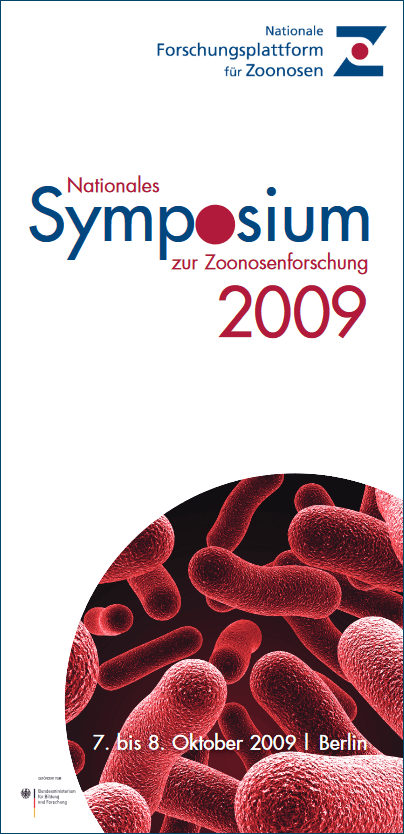United Against Animal-Origin Diseases: Over 200 Scientists Gather in Berlin

© Zubada - stock.adobe.com
Swine flu, SARS, salmonella poisoning: To effectively prevent and combat infectious diseases transmitted between animals and humans, the various researchers from human and veterinary medicine must collaborate intensively and even more closely than before. "We are therefore very pleased that more than 200 scientists are taking the opportunity to foster and intensify scientific and personal exchange at the National Symposium on Zoonotic Research," emphasized Dr. Gabriele Hausdorf, Head of the Health Research Department at the Federal Ministry of Education and Research (BMBF), in her welcome address to the symposium participants, which began on October 7, 2009, in Berlin.

"Content-wise, we span from current national measures and research projects to the latest results on epidemiology, immunity, and diagnosis of zoonotic infectious diseases, as well as new methods and tools that can support the analysis of pathogen genomes or precise diagnosis," said Prof. Dr. Martin Groschup (Friedrich-Loeffler-Institut, Insel Riems), one of the three coordinators of the newly established National Research Platform for Zoonoses, which organized the symposium and continues the tradition of zoonoses workshops conducted by the BMBF in 2007 and 2008.
The National Research Platform for Zoonoses commenced its BMBF-funded work at the beginning of 2009. "Our goal is close cooperation between biomedical basic research, human and veterinary medicine on the one hand, and university and non-university research on the other hand," explained Sebastian C. Semler (TMF, Berlin), who coordinates the platform in Berlin. "The scientists themselves steer the joint work, the content, and the orientation of the zoonoses platform, thereby possessing an instrument with which they can quickly and flexibly respond to urgent research needs arising from current scientific requirements."
"The emergence of a completely new influenza virus subtype H1N1 in humans this year highlights the importance of joint research activities once again," noted platform coordinator Prof. Dr. Stephan Ludwig (University of Münster). The interdisciplinary FluResearchNet, funded by the BMBF since 2008, has, for example, already been able to develop a new strategy to prevent the development of resistance by flu pathogens. This is particularly relevant given the worldwide increase in resistance to clinically approved anti-influenza medications.
Amidst all the excitement about flu viruses, other pathogens can also pose a threat to humans. For example, Q fever is on the rise in various European countries, including Germany. "The causative agent is the bacterium Coxiella burnetii, which is transmitted from cattle, sheep, or goats to humans," explained PD Dr. Heinrich Neubauer (Friedrich-Loeffler-Institut, Jena), who leads the Q Fever Research Consortium. According to findings from this research network, the rate of infected individuals in regions with increased sheep populations can reach up to 18 percent. "The pathogen is mainly transmitted through inhaling infectious dust or direct contact with infected animals. The infected individuals include not only agricultural workers but also walkers whose path passes by pastures," Neubauer added. The increase in the number of Q fever cases is particularly dramatic in the Netherlands, where 2,100 affected persons have already been reported since the beginning of 2009. Intensive data collection, improvements in diagnosis, or the development of effective vaccines are urgently needed to address the increase in Q fever infections effectively.
Press Contact:
Antje Schütt, Phone: 030 - 31 01 19 56
Downloads
Press Conference: Speakers’ Statements
| Anhang | Size |
|---|---|
| 04 Ludwig - Influenza - Where Does Research Stand Today | 63.09 KB |


